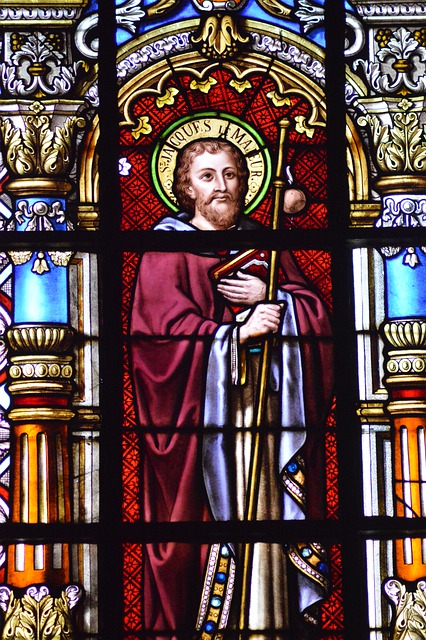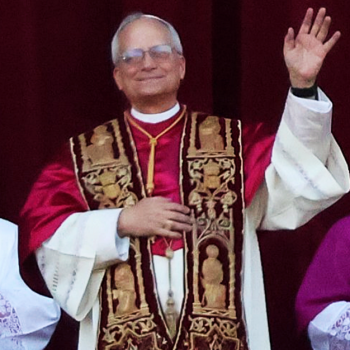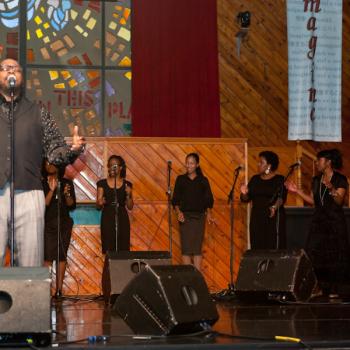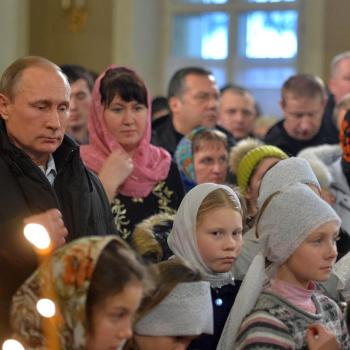
The Answer Is a Definite ‘Maybe’ & Here’s Why…
The New Testament says very little about Jesus’ biological family, leaving various Christian traditions to fill in the blanks in a variety of ways. We cannot definitely answer the question, “Did Jesus have brothers and sisters?” because the Bible teases us with possibilities rather than giving us concrete facts. Biblical writers use words that are open to interpretation and then turn their attention to more important questions about faith, salvation and our relationship with God.
But before we explore some of the rich and fascinating possibilities, let me say that I respect your right to believe whatever you feel led to believe. Religion is quite personal, and questions about Christ’s earthly family are fraught with controversy.
I’m not interested in insulting or demeaning anyone’s faith or relationship with the Lord. I simply want to explore some of the possibilities regarding Christ’s earthly family.
What the Bible Says
The New Testament gives us several narratives about the Nativity and one brief story from Jesus’ childhood. From there, it skips to the beginning of Christ’s ministry and mentions his family only sporadically.
Mark 3:31-35 tells us that on one occasion, the Lord’s “mother and his brothers came, and standing outside they sent to him and called him. And a crowd was sitting around him, and they said to him, ‘Your mother and your brothers are outside seeking you.’ And he answered them, ‘Who are my mother and my brothers?’ And looking about at those who sat around him, he said, ‘Here are my mother and my brothers! For whoever does the will of God, he is my brother and sister and mother.’”
Matthew 13:55 and Mark 6:3 refer to four “brothers” by name — James, Joses (a form of Joseph), Simon and Judas (called Jude) – as well as several unnamed sisters. A little later in the narrative, Mark 15:40 mentions James and Joses as sons of Mary when they gather at Christ’s crucifixion.
We find similar references to Christ’s mother and “brothers” in Acts 1:14, John 7:5, John 2:12, Galatians 1:19 and other scriptures.
For the sake of argument, let’s answer the question, “Did Jesus have brothers and sisters?” in the affirmative. The most likely scenarios are that Mary and Joseph had several children after the birth of Jesus or that Joseph was a widower who fathered children before he became Mary’s husband.
There is one other possibility that will undoubtedly outrage some people, but we will get to it shortly.
What the Catholic Church Believes
The three major branches of Christianity – Catholicism, Eastern Orthodox and Protestant – have different views on the question at hand. Let’s begin with the largest branch, Catholicism.
The Catholic Church teaches that Mary remained a virgin throughout her life, which means she wouldn’t have had any children other than Jesus. James and Joseph, who were called Jesus’ brothers in the Bible, were actually cousins or other extended family members, according to Catholic belief.
“The first thing to understand is that the term brother (Gk. adelphos) has a broader meaning than uterine brothers. It can mean a biological brother, but it can also mean an extended relative or even a spiritual brother,” the church says.
In Genesis 13:8, for example, the Bible refers to Abraham and Lot as brothers, although their familial relationship was actually uncle and nephew. And when Jesus appeared before more than 500 “brethren” in 1 Cor. 15:6, the Bible means spiritual rather than biological brothers.
And what of Joseph’s possible children? The Catholic Church offers two options. “An early tradition has it that Joseph was a widower who married the Virgin Mary later in life (after already having a family with his first wife). A later tradition says that Joseph also was a lifelong virgin and that the ‘brothers’ of Jesus were other relatives, perhaps cousins. Because we simply don’t know, Catholics are free to believe either tradition.” Read more here.
Eastern Orthodox Beliefs
The Eastern Orthodox Church has this to say: “It is the Orthodox Church’s position that from early on it was common knowledge that these brothers and sisters of Christ were not related by blood.”
The church believes that Mary remained a virgin throughout her life and that Joseph married her with the intent of protecting and preserving her virginity.
Mary’s womb became sacred — just as the Ark of the Covenant was sacred — because God dwelled there, the church says. Consequently, Joseph would not have had sexual relations with his wife.
Learn more about the Eastern Orthodox Church’s views on Christ’s possible family by clicking here.
Protestant Views on Christ’s Possible Siblings
Protestants believe in the virgin birth, as do all Christians, but unlike some other faith traditions, they believe that Mary and Joseph had children after Christ was born.
They cite Matthew 1:24-25, which says that Joseph “…did not consummate their marriage until she gave birth to a son. And he gave him the name Jesus” (NIV). For pastor and blogger Dan Kopp, the key word is until.
“The text does not say that Joseph and Mary were lifelong virgins. It says Joseph had no union with Mary until she gave birth to Jesus,” he states in his post, “Did Jesus Have Brothers and Sisters? A Protestant Perspective.”
Kopp directs readers to Galatians 1:18-19, which refers to James as the Lord’s brother.
“A straight-forward reading of these passages would suggest that these people are part of Jesus’ biological family. Mary is His biological mother and not His aunt…When the verse says ‘Mary’s son’ it means ‘Mary’s biological son.’ In the same way, the context suggests these others are Jesus’ biological brothers and sisters (half-brothers and half-sisters of course! They had the same mom but a different father/Father.)”
He explains that the original biblical text uses the Greek words “adelphos, which means brother, and “adelphe,’ which means sister, rather than “anepsios,” which means cousin.
“The Holy Spirit could have inspired the Bible writers to use ‘brother’ and ‘sister’ but did not. Why? Because Protestants believe these people weren’t just relatives of Jesus or ‘brothers and sisters in the Lord.’ They were siblings,” he writes.
In Protestant tradition, Jesus had four biological half-brothers — James, Joses (Joseph), Simon and Judas – and at least two half-sisters.
Kopp has no problem accepting this belief and asks, “With all due respect, why would it matter if Mary had additional children after she gave birth to Jesus? After all, she was a married woman and children are the natural fruit of a marriage covenant as ordained by God (see Gen. 1:28).”
Yet, he doesn’t want to argue with Christians who believe otherwise. He concludes that Catholic, Eastern Orthodox and Protestant Christians are family, and none of us will know the truth until we get to heaven. “So we may hold our perspectives loosely and may we ‘love one another’ in the process.
Well said!
To read Kopp’s entire blog, click here.
If you’re interested in more heated articles about Jesus’ family, check out the Patheos website using the search words “patheos jesus’ brothers”. You will discover quite a few posts, which I won’t list here.
A Different Perspective
Moving in a different direction, my research led me to an article by Dr. James Tabor called “Sorting Out the Jesus Family: Mother, Fathers, Brothers and Sisters,” which provides a more dispassionate, academic answer to our question. (You will find a link to the post at the end of this article.)
Dr. Tabor is a biblical scholar who was a full professor in the University of North Carolina-Charlotte’s Department of Religious Studies. Prior to his retirement in 2022, he taught Christian origins and ancient Judaism for 33 years and served as department chairman for more than a decade.
He “combined his work on ancient texts with extensive fieldwork in archaeology in Israel and Jordan,” his website says. He also appeared in a number of documentaries, which is how I discovered him.
“The later Christian dogma that Mary was a perpetual virgin, that she never had children other than Jesus and never had sexual relations with any man, lies at the heart of the issue. No one in the early church even imagined such an idea, since the family of Jesus played such a visible and pivotal role in his life and that of his early followers,” Tabor says.
“It all has to do with Mary being totally removed from her 1st century Jewish culture and context in the interest of an emerging view of the time that human sexuality was degraded and unholy at worst, and a necessary evil to somehow be struggled against at best,” he explains.
He points out that the Apostle Paul advocated celibacy and saw marriage as an antidote for people who might be drawn toward sexual immorality. “It is easy to see how these tendencies to equate the spiritual life with the non-sexual life were transferred to Mary and her family.”
In identifying Mary as a perpetual virgin, we forget that Mary was a Jewish woman who was married, Tabor notes. “The teaching of the ‘perpetual virginity’ is simply not found in the New Testament and it is not part of the earliest Christian creeds.
“The first official mention of the idea does not come until 374 AD from a Christian theologian named Epiphanius. Most of our early Christian writings before the later 4th century AD take for granted that the brothers and sisters of Jesus were the natural born children of Joseph and Mary.”
Tabor says that early church leaders were disturbed by the idea of Mary having a sex life and came up with two alternatives:
- The Catholic Church interpreted the word “brothers” to mean “cousins,” not actual flesh-and-blood brothers of Jesus.
- The Orthodox church concluded that Jesus’ brothers were actually Joseph’s sons from a previous marriage.
“Over the centuries it became more and more difficult for Christians, particularly in the West, to imagine Mary or Joseph as sexual human beings, or for that matter even living a ‘bodily’ life at all,” Tabor says.
Once we see Mary as a normal married Jewish woman in 1st century Nazareth, “We are free to recover a believable history (that’s) much more fascinating and rich than any theological dogma. The texts of our New Testament records begin to come alive for us.”
Tabor then asks: Who were the brothers and sisters of Jesus? He concludes they were the children of Mary and Joseph, and they were born after the couple began living a normal married life.
Dr. Tabor Throws Us a Curve Ball
He then offers another option that will shock and dismay some readers and intrigue others.
Joseph drops out of the narrative early on and probably died because of advanced age or some unknown cause, Tabor surmises.
What if Joseph died without fathering a son?
In such circumstances, the Torah directed the dead man’s unmarried brother to marry the widow and father a child in his brother’s name in order to sustain that lineage. (See Deut. 25:5-10.) If the dead man had no unmarried brother, the widow could presumably marry someone outside her husband’s family.
“To honor a man who died without an heir and thus assure his posterity was one of the most sacred and holy things a family could do…. This is one plausible reconstruction of the evidence,” Tabor says but admits, “There are things we can never know with certainty.”
I assumed that Joseph died during Jesus’ childhood since he isn’t mentioned after Christ reaches adulthood. However, I hadn’t considered the idea that Mary remarried at least once and had children from that marriage. But it could have happened.
I was aware of the practice in which an unmarried Jewish man was obligated to marry his brother’s widow if his brother died without fathering a child. It not only ensured that the dead man’s line continued, which was extremely important, but it also helped protect the widow in that she could have children – namely, sons – who would care for her as she aged.
In biblical times, Jewish women desperately needed a father, husband or son to protect and support them. Without a close male relative, they had an extremely difficult existence, as Ruth and Naomi did before Ruth married Boaz.
My Thoughts
There was no shame in Mary remarrying if Joseph predeceased her. In fact, society would have been expected it. There also was no shame in Mary and Joseph having sexual relations in the hope of having their own children after Jesus’ birth. That too would have been expected.
The idea that Mary was a lifelong virgin seems unreasonable given her marital status. And the thought of Joseph remaining celibate for his entire life is even less likely. They were a heterosexual married couple who lived in 1st century Nazareth, and nothing in the Bible forbade them from having a normal marriage.
When we go back to the main question – did Jesus have biological brothers and sisters – my answer is that he probably did, but it isn’t important.
Rather than worry about whether Mary and Joseph had sex (there, I’ve said it!), I would rather concentrate on understanding the Bible and living a God-centered life. But again, I respect your right to have different beliefs.
If you’re interested in learning more about Jesus’ possible biological family, click here to read Dr. Tabor’s entire article. It’s an interesting read that will lead you to other articles the retired professor has written.

















